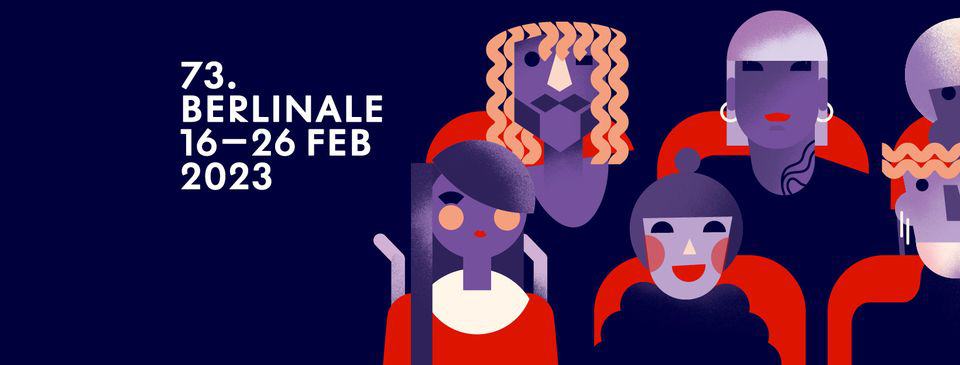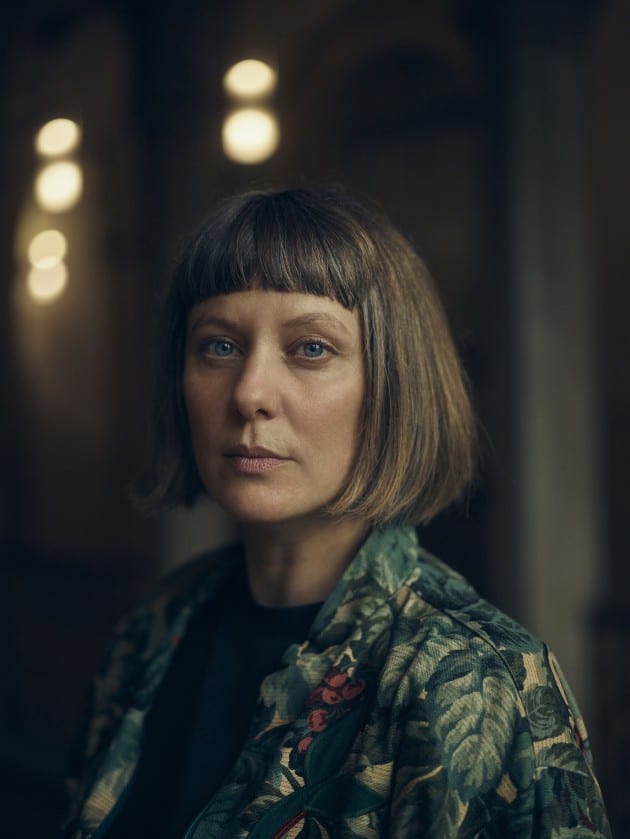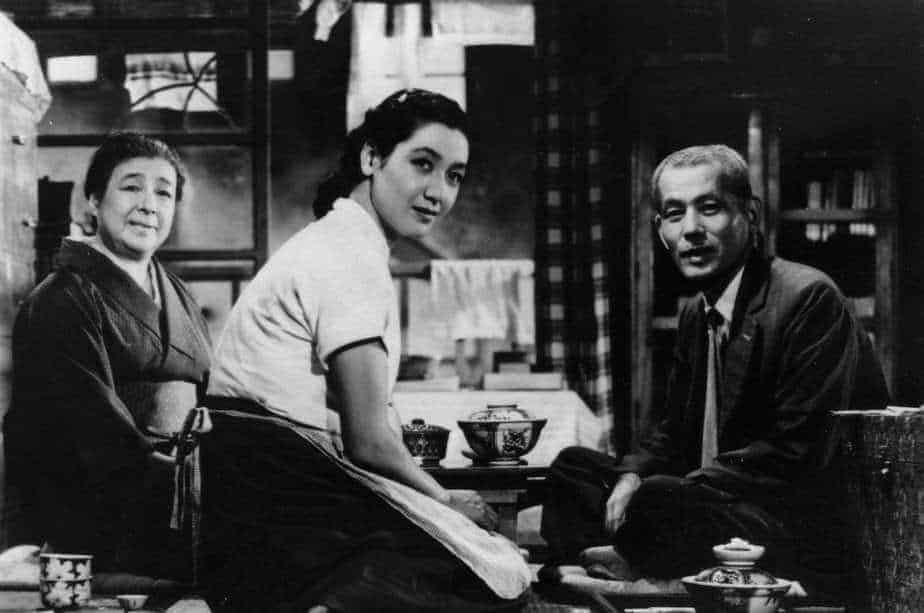Steffi Niederzoll's first feature documentary “Seven Winters in Tehran” about the case of Reyhaneh Jabbari, a young woman who was condemned to death for pre-meditated murder in Tehran in 2007, was the opener of Berlinale's Perspektive Deutsches Kino program. The film was composed of material consisting of interviews with Reyhaneh's closest family members, her defence attorney and a couple of former inmates, and rounded up with old home videos, and those captured by cell phone cameras, and masterly edited into a narrative that captivates viewer's mind.
Steffi Niederzoll is a German filmmaker and multidisciplinary artist based in Berlin. Her shorts have screened to critical acclaim at several international and national film festivals. She was, among other, a member of the collective “1000 Gestalten”, which caught the attention with its performance during the G20 summit in Hamburg in 2017.
Asian Movie Pulse was curious about the genesis of “Seven Winters in Tehran”, and particularly about the technical aspects of the film. We met the director at the Berlinale, immediately after the world premiere.
Seven Winters in Tehran is screening at Berlinale

You chose an incredibly heavy topic for your debut feature documentary. To escape talking about the usual things such as- the inspiration for the movie, and asking all the ‘hows', I would like to move straight to the technical questions. Let's talk about the selection of footage put together to build the film's nerve-wrecking narrative.
It all began when I got the material from the family which they shot during the period of time before and after the trial, and which was not made for the purpose of a future film, but to show it to Reyhaneh once she gets out of the prison. That was one of the reasons, and the other was to collect the evidence. That was the starting point of my movie, so I began to concentrate only on it. But as it usually is, something else came into the focus. I have noticed how amazing the texts written by Reyhaneh were, some of them read in her voice, but not all of them. When I decided that they absolutely have to become a part of the film, and that they needed to be addressed, there was the question about how to accompany them visually. Slowly, the picture got crystalized in my head. I realized that I needed to recreate those spaces, and to show them empty: the prison cells as they were but where was impossible to shoot, or Reyhaneh's family home. I was faced with the only option – we had to build models, and not to seize for 3D. Everything was hand-made, which costed us many months of work.
There is also a lot of research invested in them, which I personally did. I had to know how those rooms looked like, and I was asking myself what would be the most optimal way to present them. I had a feeling – because I am German – and I make a movie about Iran, that I will do everything wrong, which made it necessary to do a meticulous research and stick to the facts. We have also noticed that a lot of images were absent. So, we didn't only recreate the prison cell, but also the family apartment. I haven't spoken about those things until now, because nobody asked me about it. We have actually made a completely crazy experiment. Everything was done here in Berlin. So we had a ‘fake' family apartment that looks exactly the same as the one back in Tehran here in Germany, in which we shot the scenes with the family members in peace and quiet. I created a space in which they could reflect on what they went through. Almost all of it was unfortunately cut out from the film, but I am working on a new project in which this footage will be used because it's both shocking and exciting. I could pull that off because I was already befriended with the family, and we were close.
There are a couple of fragments in the movie where you can see the remains of that concept, which is the case with Reyhaneh's empty room. Additionally, I was aware of the absence of the images from Iran. I found big support from the Zebra Kroop Iran collective specialized in taking illegal photos in Iran. They helped me a lot, not only by establishing contacts with the Iranian filmmakers, but also through their access to the archives. All photographs in my movie showing places in Tehran are from this archive. They have managed to chose the photos taken almost in the identical time as the dramatic happenings surrounding Reyhaneh's case. I was given that incredible access, but there were still a couple of places that I couldn't get images of. This is the case with the Evin prison, because all I had were three official pictures of it which I didn't want to use.
Check out the review of the film
That is a very brave story. How does it work in a country that is so much under surveillance? Doesn't that involve a lot of risk?
Exactly, which is why I won't be giving details in order to protect the people who are doing it. De facto, I obviously needed very dangerous shots of the high security prisons and from the family house, but in the latter case, we didn't want to risk putting the life of Reyhaneh's father in danger. Also, there were governmental buildings involved in the story which couldn't be filmed either. I told them what I need, and also about my general idea for the film, telling them where what is, after which they contacted their people in Iran who were ready to do it because they wanted this film to be made. They didn't do it for money. So, those people with whom I collaborated without knowing them personally, they did it for Reyhaneh. There was this, so to say, energy exchange. When I talk about it, I get goose bumps because I was in safety in Germany while they were risking their lives. I was totally nervous around the times when they were shooting, constantly looking at my wrist-watch expecting to hear the news. I was extremely stressed out, but fortunately only positive things came out of it. They did a lot of work for the film. I was surprised by the outcome, and so happy that nothing bad had happened. Those people gave me strength to continue.
I guess that the smuggled material imposed a great challenge, because you had to go through heaps of videos and decide what to use. How did you work with it?
I was already very familiar with the story through my conversations with the family. I already had the most important material, and there was constantly something new coming in. That was something that never stopped. New images were flowing in, new videos occured, new testimonies. One of the most important late entries were the children recordings, or the found tapes. Although the process was very long, I had a script that I followed, because I had a pretty clear idea how the film should be. Despite of it, I sat together with my editor Nicole Kortlüke countless days. Without her, this film wouldn't be what it is. She was an enormous help to go through this mountain of material. While making this film, I also started writing a book with Shole Pakravan. That was beautiful, because I could not get away from so many things surrounding Reyhaneh's story that were occupying my mind. I knew from the beginning that I wanted to make a film with a lot of people, but in such a way that it doesn't become lurid. It had to be morally and technically fulfilling, and also approachable. Additionally, it had to have the standard length and not to go forever.
Although clearly a documentary, the film is put together in such a way that it plays like a thriller. The viewer becomes jumpy, attentive, waiting for what is coming next.
That is partially due to the incredibly touching and nerve-wrecking material we got our hands on, and also thanks to Nicole Kortlüke's masterly editing. We were able to pull the breaks, and to project what the whole family was going through.
Considering the nature of the events that resulted with this film, and knowing how close you stand to the family, what is the feeling like being here in Berlin and presenting the film to a large audience, and having them with you?
We can speak of mixed feelings. On the one hand, it is exciting, on the other it is not easy. Shole hasn't seen the final version yet, and she doesn't want to see the film until the very last screening. We made the decision together, because she was not feeling well when she saw the first version. Of course, her reaction wasn't to the film, but to the memories of life they had. The family isn't watching the 97 minutes of a film, but they see their past. The young woman Samira who was in prison in Reyhaneh, and who now lives in Europe was crying through the film from the first minute at the world premiere. She was only 15 years old when she was condemned to death, and her sister was 11. It took only half an hour for the Iranian judge to send three women to death. But she did come after the screening to thank me. It's their life on screen.















